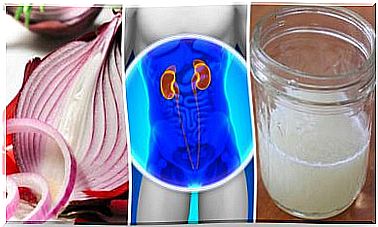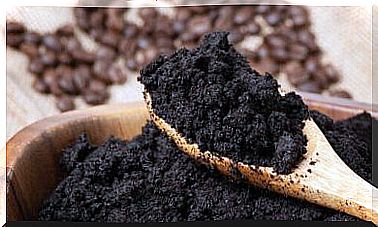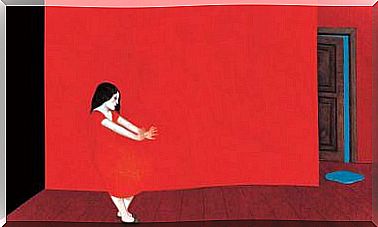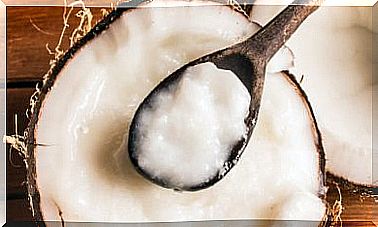Anatomy And Characteristics Of The Large Intestine Or Colon
The large intestine, also known as the colon, is part of the digestive system. It fulfills very important functions in the body related to hydration, vitamin absorption and waste storage. In addition, in this organ we find the famous intestinal flora.
Discover below the anatomy of the large intestine. Also, you will be able to know one by one the functions it performs to maintain good general health.
The large intestine
The United States National Library of Medicine notes that the large intestine is part of the digestive system and is also called the colon. It begins after the ileum, the final portion of the small intestine, and extends to the anus.
It is a long, hollow tube that receives substances that the small intestine did not digest, absorbs water, and stores stool. These, finally, are expelled through the rectum and the anus.
The large intestine is usually about 1.5 meters long. Its diameter is approximately 6.5 centimeters, but it is considered normal for it to reach between 7 and 10 centimeters. It is called “large” because its volume is greater than that of the small intestine.
Article How does the intestine work? explains that the Large intestine is made up of four parts that are: cecum, colon , rectum and anal canal. In turn, the colon is made up of four sections: the ascending colon, the transverse colon, the descending colon, and the sigmoid colon.
The cecum: the beginning of the large intestine
According to data from the MSD Manual , it is the first section of the large intestine. It is located between the ileocecal valve and the ascending colon. It can be defined as a cul-de-sac that is about 8 centimeters long and 8 centimeters wide.
The cecum is almost entirely enveloped by the peritoneum. However, it does not have a mesentery. This particular configuration makes its movement similar to that of a ball. It is located about 2.5 centimeters from the inguinal ligament.
In the middle posterior part of the cecum there is a worm-shaped tube known as the “appendix”, although it is more accurate to call it “vermiform appendix”. It is located about 3 centimeters from the ileocecal valve and is between 6 and 10 centimeters long. It is not known what function it fulfills.
The colon, a work of engineering
The second section of the large intestine is called the “colon” and, as the Spanish Association against Cancer explains, it is made up of 4 parts: ascending, transverse, descending and sigmoid. Each section succeeds the other and together they form a kind of arch. These are the characteristics of each portion:
- Ascending colon. It goes to the right, from the cecum to the right lobe of the liver. There, it turns left at a point called the “right colic flexure” or “hepatic flexure.” It measures about 15 centimeters.
- Transverse colon. It is the largest and most mobile section of the entire large intestine. It measures 45 centimeters approximately. It goes from the hepatic flexure to the “left colic flexure”, or “splenic flexure”. There, take a downward turn.
- Descending colon. It goes from the splenic flexure to the left iliac fossa, at the edge of the pelvis. It is the narrowest area in the entire colon and is approximately 30 centimeters long.
- Sigmoid colon. It is the part that joins the descending colon with the rectum. It has a variable length, but generally it does not exceed 40 centimeters. It is quite mobile and has an S shape.
The main functions of the colon are: to extract water, maintain the balance in hydration, absorb some vitamins such as vitamin K and store waste. There, bacteria reside, as well as the intestinal flora.
The rectum and anal canal
The rectum runs from the sigmoid colon to the anal canal and is located at the back of the pelvis. It measures about 12 centimeters. In the area near the anal canal, or distal area, the rectum widens and forms the so-called “rectal blister”.
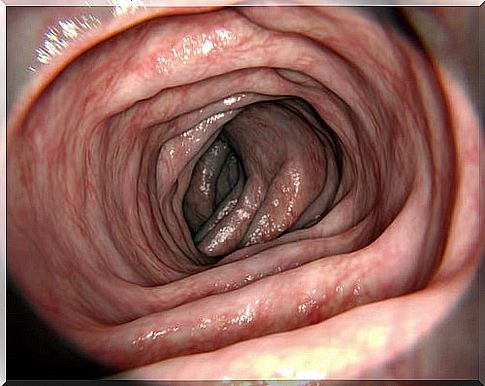
The anal canal is the final portion of both the large intestine and the entire digestive system. It is located outside the abdominal cavity. At the junction between the rectum and the anus there is a sudden change in the tissue, or epithelium, of the intestinal mucosa. This is because the end area is more exposed to abrasions.
The duct is about 4 centimeters long. It ends in a hole called anus that has two sphincters, or ring-shaped muscles. These are the internal anal sphincter and the external anal sphincter. These are its characteristics:
- Internal anal sphincter. It presents a thickening of the muscles and is involuntary. Corresponds to the lower two thirds of the anal canal.
- External anal sphincter. It borders the anal canal and partially overlaps the internal sphincter. He has been a volunteer from approximately 18 months of age.
In the anal canal, there is also a venous network of enormous importance, which is called the “hemorrhoidal plexus”. It is made up of the superior, middle and inferior rectal veins. If they enlarge, they cause hemorrhoids.
In conclusion, the large intestine is the main responsible for digesting water as well as for discarding those substances that are not useful for the body. Knowing its anatomy and its functions is essential to put its importance in perspective and take care of it as it deserves.
